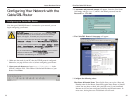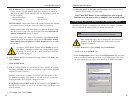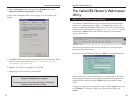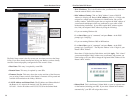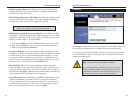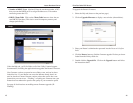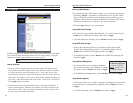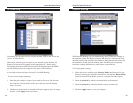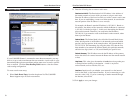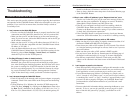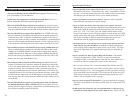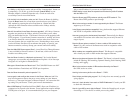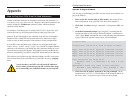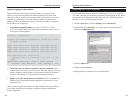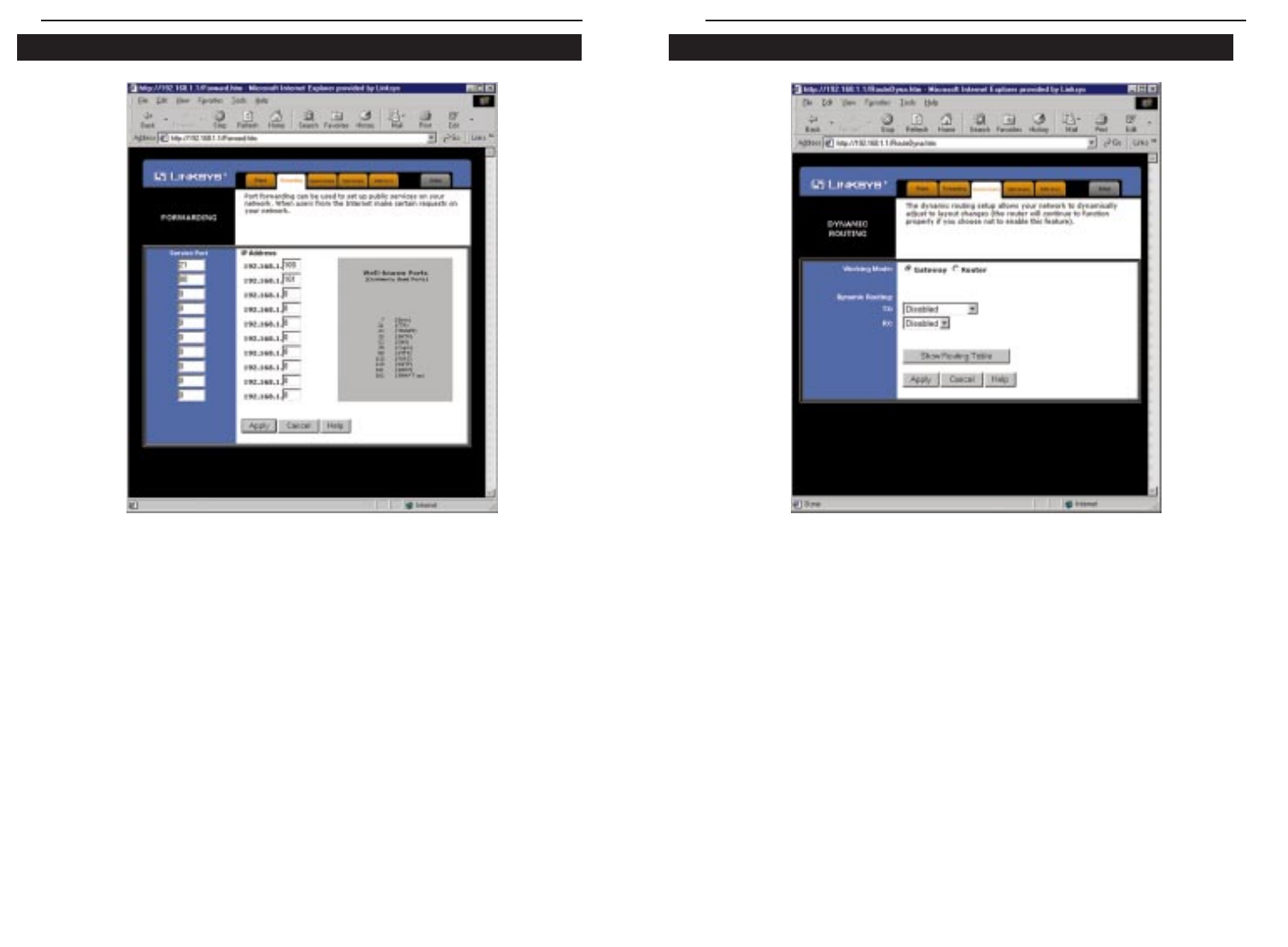
EtherFast Cable/DSL Routers
50
Instant Broadband Series
49
Dynamic Routing
With Dynamic Routing, you can automatically adjust to physical changes in
the network's layout. The Router, using the RIP protocol, calculates the most
efficient route for the network’s data packets to travel between the source and
the destination, based upon the shortest paths. The RIP protocol regularly
broadcasts routing information to other routers on the network.
To set up dynamic routing:
1. Select the correct working mode. Gateway Mode should be used if your
Router is hosting your network's connection to the Internet. Router Mode
should be selected if the Router exists on a network with other routers.
2. Select the protocol by which you transmit data on the network.
3. Select the protocol by which the Router receives network data.
4. Click the Apply button to save your changes.
IP Forwarding
Forwarding sets up public services on your network, such as web servers, ftp
servers, or email servers.
When users send this type of request to your network via the Internet, the
Router will forward those requests to the appropriate PC. Before using
Forwarding, the Router's DHCP function must be disabled under the DHCP
tab and the Router must be assigned a new static LAN IP address.
If you need to forward all ports for one PC, use DMZ Hosting.
To add a server using Forwarding:
1. Enter the port number or range of ports used by the server. On the same
line, enter the LAN IP address of the server that you want the Internet
user(s) to access.
2. Configure as many entries as needed- the Router supports up to 10 ranges
of ports. Click Apply when you’re done.



